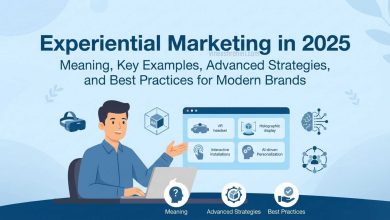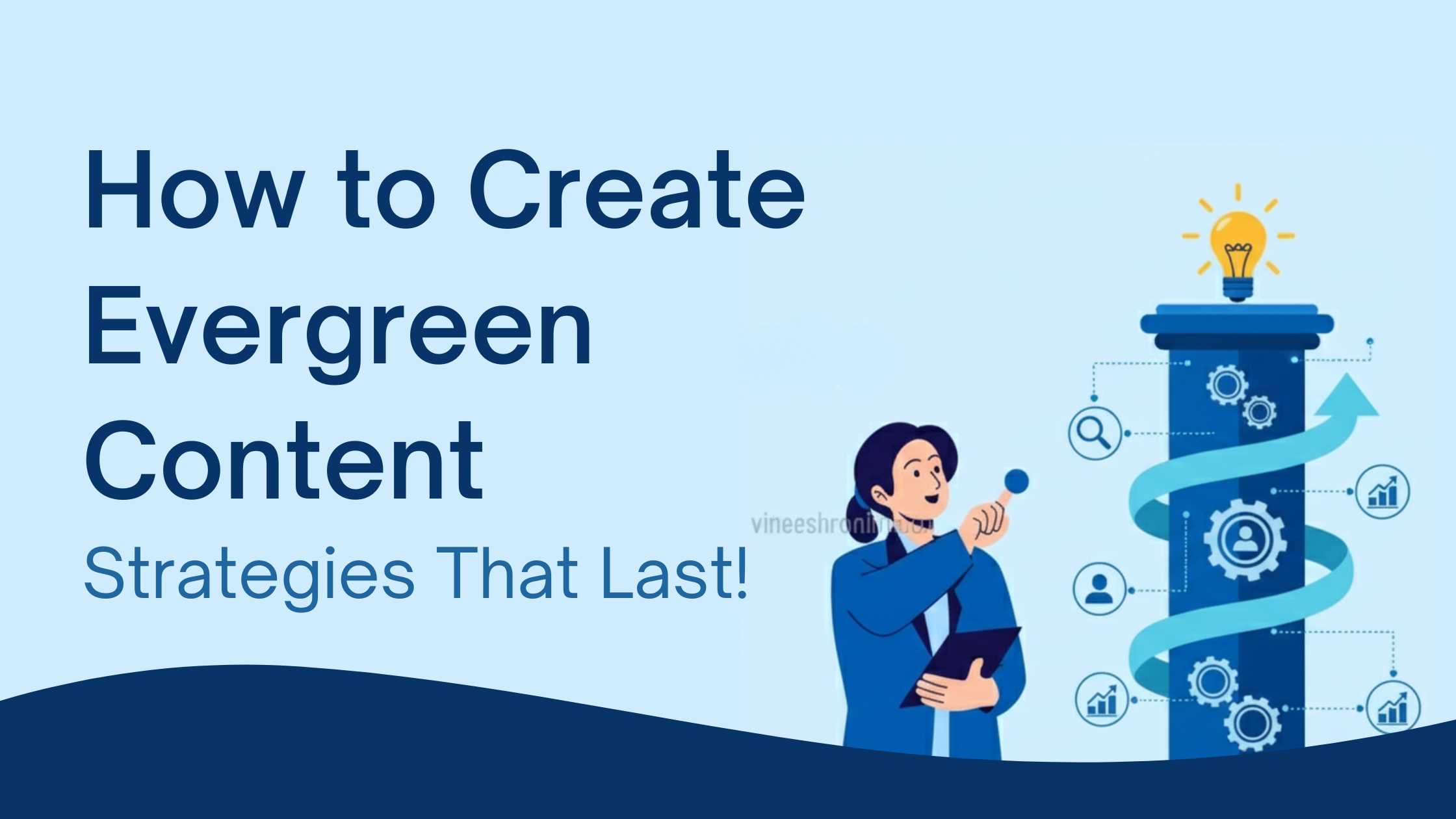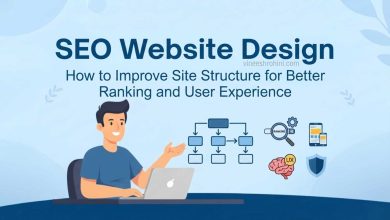How to Launch a Paid Webinar for Lead Generation : Comprehensive Guide 2025
How to Launch a Paid Webinar : In 2025, online marketing strategies are evolving rapidly, and paid webinars have emerged as one of the most effective tools for lead generation and revenue growth. Unlike free webinars that often attract casual attendees, paid webinars attract highly qualified prospects who are genuinely interested in your products, services, or expertise. A well-planned paid webinar can not only generate leads but also convert them into loyal customers while establishing your authority in your niche.
Table of Contents
This comprehensive guide will take you through every step of launching a paid webinar for lead generation, from planning and promotion to execution and post-webinar strategies.
Why Paid Webinars Are Effective for Lead Generation

Paid webinars offer multiple advantages over free webinars when it comes to lead generation:
- Qualified Audience: People who pay for a webinar are more invested, engaged, and likely to become high-quality leads.
- Revenue Generation: Unlike free webinars, paid webinars generate immediate revenue while building your email list.
- Authority Building: Hosting paid webinars positions you as an expert in your niche, boosting credibility.
- Higher Engagement: Paying attendees are more likely to participate, ask questions, and take desired actions.
- Data Collection: You gain valuable insights into your audience’s behavior, preferences, and pain points.
Also Read : The Future of Influencer Marketing with AI : Comprehensive Guide 2025
With the integration of AI tools, automation platforms, and advanced webinar software in 2025, hosting and scaling paid webinars has never been easier.
Step 1: Define Your Webinar Goal and Audience
The first step in launching a successful paid webinar is defining your goal. Are you aiming to:
- Generate leads for your online course or product?
- Sell premium services?
- Build an email list of high-quality prospects?
Once your goal is clear, define your target audience. Conduct surveys, market research, and analyze competitor webinars to understand your ideal attendees’ needs, challenges, and expectations. The more specific your audience, the higher your conversion rates will be.
Pro Tip: Focus on a niche topic that addresses a pressing problem in your industry. For example, “AI Tools for Digital Marketers in 2025” or “How to Build a Personal Brand Online Through LinkedIn” are highly targeted topics that attract qualified leads.
Step 2: Choose a Compelling Webinar Topic
Your topic is the hook that attracts attendees. A compelling topic should be:
- Relevant: Address current trends or challenges in your niche.
- Specific: Focus on a particular problem or solution rather than a broad subject.
- Results-Oriented: Highlight the tangible benefits or skills attendees will gain.
- High-Demand: Use keyword research tools like G Trends, SEMrush, or Ahrefs to identify high-search topics.
Examples of high-converting paid webinar topics for 2025:
- “Mastering AI-Powered Social Media Marketing for Business Growth”
- “Step-by-Step Guide to Launching an Online Course in 2025”
- “How to Generate $10,000 Monthly Leads with Paid Webinars”
- “LinkedIn Marketing Secrets for B2B Lead Generation”
Step 3: Plan Your Webinar Content
A structured, value-driven content plan ensures your paid webinar delivers results. Divide your webinar into the following segments:
- Introduction: Establish credibility and rapport. Share your story, achievements, and expertise.
- Problem Statement: Highlight the specific problem or pain point your audience faces.
- Solution Overview: Introduce actionable strategies, frameworks, or methods that solve the problem.
- Deep Dive / Training: Offer step-by-step instructions, case studies, or demonstrations. Provide actionable tips your audience can implement immediately.
- Q&A Session: Engage your audience, answer questions, and address objections.
- Offer / Call-to-Action: Present your product, service, or lead magnet as the next step for attendees.
Pro Tip: Use storytelling, data, and real-life examples to make your content relatable and engaging. Incorporate visual aids, slides, polls, and interactive tools to maintain attention.
Step 4: Choose the Right Webinar Platform
Selecting the right platform is critical for smooth execution and high attendee satisfaction. In 2025, the best webinar platforms offer features like automated registration, payment processing, live streaming, analytics, and attendee engagement tools. Popular options include:
- Zoom Webinars: Widely used, reliable, and easy to use.
- WebinarJam: Advanced marketing tools and automation for paid webinars.
- Demio: User-friendly platform with high engagement features.
- GoToWebinar: Professional-grade webinar hosting with analytics.
- Kajabi or Teachable: Ideal for integrating paid webinars with online courses.
When choosing a platform, consider:
- Payment Integration: Accept credit cards, PayPal, and other payment gateways seamlessly.
- Ease of Use: Ensure smooth registration, streaming, and attendee management.
- Engagement Tools: Polls, chat, handouts, and Q&A features enhance attendee participation.
- Analytics: Track registration, attendance, drop-off, and conversion metrics for optimization.
Step 5: Set Your Webinar Pricing
Pricing is crucial for maximizing lead quality and conversions. Consider the following strategies:
- Entry-Level Pricing: Low-cost webinars attract more attendees but may reduce perceived value.
- Premium Pricing: Higher ticket prices attract serious prospects and generate significant revenue.
- Early-Bird Discounts: Offer discounted rates for early registrants to boost sign-ups.
- Tiered Pricing: Provide multiple packages—basic, premium, and VIP—with added benefits like one-on-one consultations, bonus materials, or recordings.
Pro Tip: Test different pricing models for your webinars to find the sweet spot that maximizes both attendance and revenue.
Step 6: Promote Your Paid Webinar

Promotion is key to attracting attendees and generating leads. A multi-channel marketing approach works best:
- Email Marketing: Send personalized invitations, reminders, and follow-ups to your email list. Use segmentation to target high-potential leads.
- Social Media Marketing: Promote on platforms like LinkedIn, Instaand FB. Create teaser videos, carousel posts, and stories highlighting webinar benefits.
- Paid Ads: Run targeted ads on FB, Insta, LinkedIn, or G to reach a wider audience. Use retargeting ads to capture potential attendees who visited your landing page but didn’t register.
- Influencer Partnerships: Collaborate with influencers in your niche to endorse your webinar.
- Blog Content: Write blog posts related to your webinar topic and include a strong call-to-action for registration.
- Landing Page Optimization: Your webinar landing page should be visually appealing, mobile-friendly, and clearly convey the benefits of attending. Include testimonials, agenda, and a countdown timer for urgency.
Step 7: Execute the Webinar Professionally
The execution of your paid webinar can make or break your lead generation efforts. Consider the following tips:
- Technical Setup: Test your audio, video, internet connection, and presentation slides. Ensure backup devices are ready.
- Presentation Skills: Speak clearly, maintain eye contact with the camera, and engage attendees.
- Engagement Tactics: Use polls, quizzes, live chats, and interactive exercises to maintain attention.
- Time Management: Stick to the agenda, allocate time for Q&A, and avoid overloading content.
- Recording: Record the webinar for attendees who miss it and for repurposing as paid content or lead magnets.
Step 8: Post-Webinar Strategies for Lead Generation
Generating leads doesn’t end when the webinar ends. Post-webinar follow-ups are critical:
- Follow-Up Emails: Send thank-you emails, additional resources, and replay links. Include a clear call-to-action to convert leads.
- Survey Attendees: Collect feedback on content quality, presentation, and potential interest in products or services.
- Segment Leads: Identify hot leads, warm leads, and cold leads for targeted follow-ups.
- Repurpose Webinar Content: Use recordings for lead magnets, YouTube content, social snippets, and blog posts.
- Offer Upsells or Bonuses: Provide exclusive offers or bonus content to increase conversions from attendees.
Pro Tip: Automation tools like ActiveCampaign, HubSpot, or ConvertKit can streamline follow-ups and lead nurturing sequences efficiently.
Step 9: Analyze Performance Metrics
Analyzing your webinar’s performance helps optimize future sessions. Key metrics include:
- Registration vs. Attendance Rate: Measure how many registered attendees actually attended.
- Engagement Rate: Track poll responses, chat activity, and Q&A participation.
- Conversion Rate: Evaluate how many attendees became paying customers or leads.
- Drop-Off Rate: Identify at what point attendees leave to improve content flow.
- Revenue per Webinar: Track total revenue generated versus expenses for ROI calculation.
Data-driven insights allow you to refine your strategy, improve engagement, and boost conversions in future webinars.
Step 10: Scale Your Paid Webinars
Once your first webinar succeeds, scale your efforts for maximum impact:
- Recurring Webinars: Schedule weekly, bi-weekly, or monthly webinars for consistent lead generation.
- Webinar Series: Create a multi-session program to nurture leads over time.
- Affiliate Marketing: Allow partners to promote your webinars for a commission.
- Upsell Opportunities: Offer premium courses, memberships, or one-on-one coaching to attendees.
- Automation: Use automated or evergreen webinars to generate leads continuously without live effort.
Scaling allows you to build a predictable sales pipeline while maintaining audience engagement and authority in your niche.
How to Launch a Paid Webinar – Conclusion

Launching a paid webinar for lead generation in 2025 is a powerful strategy for building your audience, generating high-quality leads, and establishing authority in your niche. By choosing a compelling topic, structuring high-value content, promoting effectively, executing professionally, and leveraging post-webinar follow-ups, you can turn paid webinars into a consistent revenue-generating and lead-generating engine.
Buy Now : ChatGPT Money Making Machine
With the right tools, automation, and data-driven insights, paid webinars can become a cornerstone of your digital marketing strategy, driving both immediate results and long-term growth.
Disclaimer : The strategies, platforms, and tools mentioned in this guide are for informational purposes only. Results may vary based on niche, audience engagement, and implementation. Always conduct your own research before investing in paid webinar platforms or marketing campaigns.
Keywords : How to Launch a Paid Webinar – How to Launch a Paid Webinar 2025



